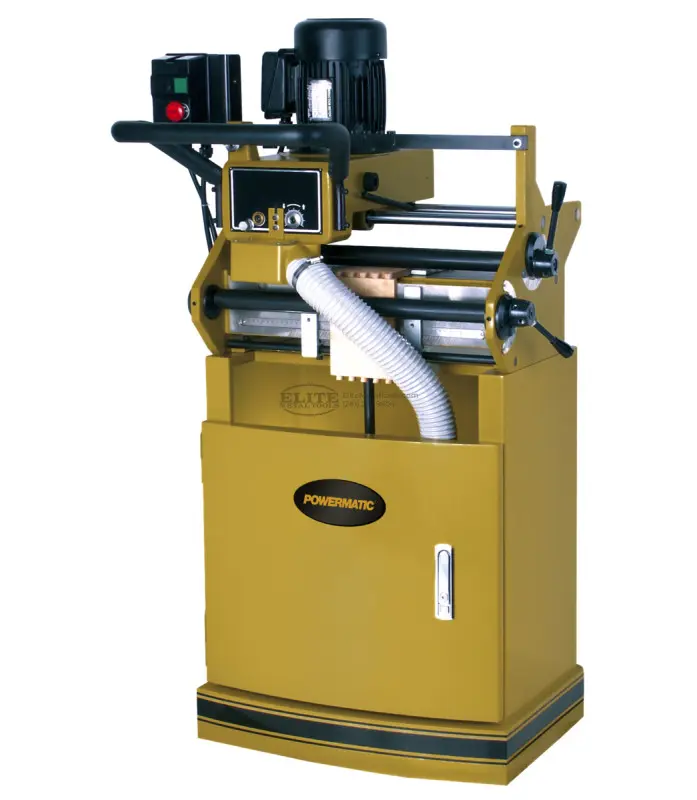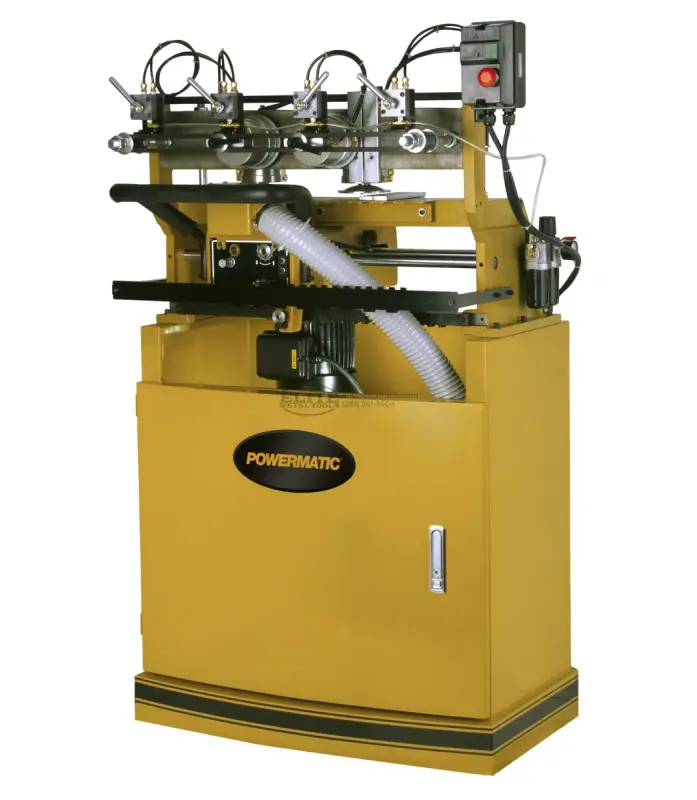Elite Metal Tools Articles
Industry news, tips, and updates on all things Elite Metal Tools
Dovetail Machines - Let's Learn About
Dovetail Machines for Woodworking: Unlocking Precision and Efficiency
Introduction
Woodworking is an age-old craft that has seen significant advancements over the years. Among the many tools and techniques available to woodworkers, dovetail machines stand out as a key innovation, revolutionizing the way dovetail joints are created. In this comprehensive guide, we will delve into the history, types, usage, benefits, and tips for mastering dovetail joints with these machines. We will also explore the pros and cons of using dovetail machines versus hand-cut dovetails and the future of these machines in woodworking. Whether you are a seasoned craftsman or a woodworking enthusiast, understanding these machines and their capabilities will undoubtedly elevate your woodworking projects to new heights.
History of Dovetail Machines
The history of dovetail machines traces back to the 19th century when woodworking tools began to undergo significant changes due to the Industrial Revolution. Before the advent of dovetail machines, craftsmen relied on hand tools and their exceptional skills to meticulously craft dovetail joints. This time-consuming process limited the efficiency and speed of production.
In the late 1800s, advancements in machinery brought about the emergence of early dovetailing machines. These machines simplified the process of creating dovetail joints by automating certain steps, making it easier for woodworkers to achieve precise and consistent results. Over the years, with continuous refinement and technological progress, dovetail machines have evolved into highly efficient and versatile tools that cater to various woodworking needs.
Different Types of Dovetail Machines
Dovetail machines come in several types, each tailored to specific woodworking requirements. Some of the most common types include:
-
Manual Dovetail Machines: These traditional machines require manual operation and are ideal for craftsmen who prefer a hands-on approach to woodworking. They offer greater control over the dovetailing process, allowing for customized joint configurations./product/1054
-
Semi-Automatic Dovetail Machines: Combining manual and automated features, semi-automatic machines streamline the dovetailing process by automating certain movements, enhancing efficiency without compromising on precision.
-
CNC Dovetail Machines: Leveraging computer numerical control (CNC) technology, these machines provide unparalleled precision and versatility. Woodworkers can program intricate dovetail designs, creating complex joints with ease.
Choosing the Best Dovetail Machine for Your Woodworking Projects
Selecting the right dovetail machine depends on various factors, including the scale of your projects, budget, and desired level of automation. Consider the following tips when making your decision:
-
Project Scale: For small-scale or hobbyist projects, a manual dovetail machine may suffice. However, for larger production runs, a semi-automatic or CNC machine will significantly boost efficiency.
-
Precision and Complexity: If your projects demand intricate and precise dovetail joints, investing in a CNC dovetail machine with computer-assisted design capabilities will yield exceptional results./product/12153
-
Brand Reputation: Trusted brands like Powermatic have a long-standing reputation for producing high-quality woodworking machinery. Their dovetail machines often come with reliable warranties and customer support.
Using a Dovetail Machine Effectively
Using a dovetail machine effectively requires attention to detail and adherence to best practices. Here's a step-by-step guide to help you get started:
-
Preparation: Select the appropriate wood for your project and ensure it is properly dimensioned and planed before beginning the dovetailing process.
-
Machine Setup: Follow the manufacturer's instructions to set up the dovetail machine correctly. This includes adjusting cutting depth, spacing, and tail-to-pin ratio.
-
Safety Measures: Always prioritize safety. Wear appropriate protective gear, keep the workspace well-lit and organized, and follow all safety guidelines provided by the machine manufacturer.
-
Test Cuts: Before working on your final project piece, practice on scrap wood to fine-tune the machine settings and ensure the desired results.
-
Joint Assembly: Once your dovetails are cut, carefully assemble the joint, applying glue where necessary, and clamp the pieces together until the adhesive sets.
Benefits of Dovetail Machines in Woodworking
The incorporation of dovetail machines into woodworking processes offers numerous benefits:
-
Time Efficiency: Dovetail machines drastically reduce the time required to create dovetail joints, increasing overall productivity and allowing woodworkers to take on larger projects.
-
Consistency: With the precision of dovetail machines, each joint is uniform, resulting in visually appealing and structurally robust connections.
-
Versatility: From simple box joints to complex sliding dovetails, these machines can handle a wide range of joint styles, accommodating various woodworking needs.
Dovetail Machines vs. Hand-Cut Dovetails: Pros and Cons
While dovetail machines offer efficiency and accuracy, hand-cut dovetails hold a special place in traditional woodworking. Let's explore the pros and cons of each method:
Dovetail Machines:
Pros:
-
Time-efficient, allowing for increased productivity
-
Consistent and uniform results
-
Suitable for mass production
-
Accommodates a wide range of joint styles
Cons:
-
Initial investment cost
-
Requires some learning and practice to operate effectively
Hand-Cut Dovetails:
Pros:
-
Artistic and handcrafted appeal
-
Minimal investment in specialized machinery
-
Personal satisfaction and sense of accomplishment
Cons:
-
Time-consuming, limiting production efficiency
-
Higher likelihood of human error and less uniform results
-
Steeper learning curve and advanced skill required
The Evolution of Dovetail Machines: Past, Present, and Future
The history of dovetail machines has been marked by continuous evolution. Early machines were mechanically simple but laid the foundation for today's advanced models. In the present day, CNC technology has revolutionized woodworking, and dovetail machines have followed suit. The future holds the promise of even greater precision, automation, and integration with design software, further enhancing woodworking capabilities.
Common Mistakes to Avoid When Using a Dovetail Machine
Even with the convenience of dovetail machines, certain mistakes can compromise the quality of your work. Be mindful of the following common errors and avoid them:
-
Improper Bit Setup: Failing to set up the dovetail bit correctly can result in incorrect joint spacing, depth, or an unstable connection.
-
Insufficient Test Cuts: Neglecting to make test cuts on scrap wood before proceeding to the final project can lead to wasted materials and flawed joints.
-
Neglecting Blade Maintenance: Regularly clean and sharpen your dovetail machine's cutting blades to ensure precise and clean cuts.
Enhancing Woodworking Efficiency with Dovetail Machines
Dovetail machines significantly enhance woodworking efficiency by streamlining the process of creating joints. The time saved allows woodworkers to take on more projects and meet tight deadlines without compromising on quality.
Dovetail Machine Safety: Best Practices and Guidelines
Prioritizing safety is paramount when using any woodworking machinery, including dovetail machines. Adhere to these best practices to ensure a safe working environment:
-
Proper Training: Ensure operators are adequately trained in the use of the dovetail machine before allowing them to operate it.
-
Safety Gear: Always wear appropriate safety gear, including safety glasses, hearing protection, and dust masks.
-
Clear Workspace: Keep the working area clean and organized to prevent accidents caused by clutter.
Creating Intricate Dovetail Designs with Advanced Dovetail Machines
Advanced dovetail machines equipped with CNC capabilities open up a world of possibilities for intricate dovetail designs. From decorative joints to complex geometric patterns, these machines enable woodworkers to explore their creativity and produce stunning results.
Summary
Dovetail machines have revolutionized woodworking by streamlining the process of creating precise and strong dovetail joints. From the early days of manual machines to the cutting-edge CNC technology, these machines have evolved significantly over time. While they offer efficiency and consistency, hand-cut dovetails retain their charm in traditional woodworking practices. By mastering the tips and tricks and avoiding common mistakes, woodworkers can unlock the full potential of dovetail machines. Brands like Powermatic, with their commitment to excellence and innovation, have established themselves as reliable providers of top-notch woodworking machinery, ensuring that your investment in a dovetail machine is one that yields exceptional results for years to come. Embrace the power of dovetail machines in your craft, and witness the seamless fusion of art and technology in your woodworking endeavors.

